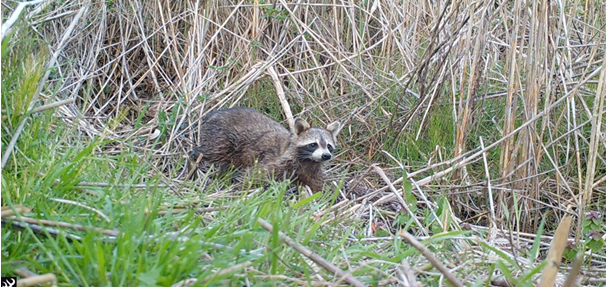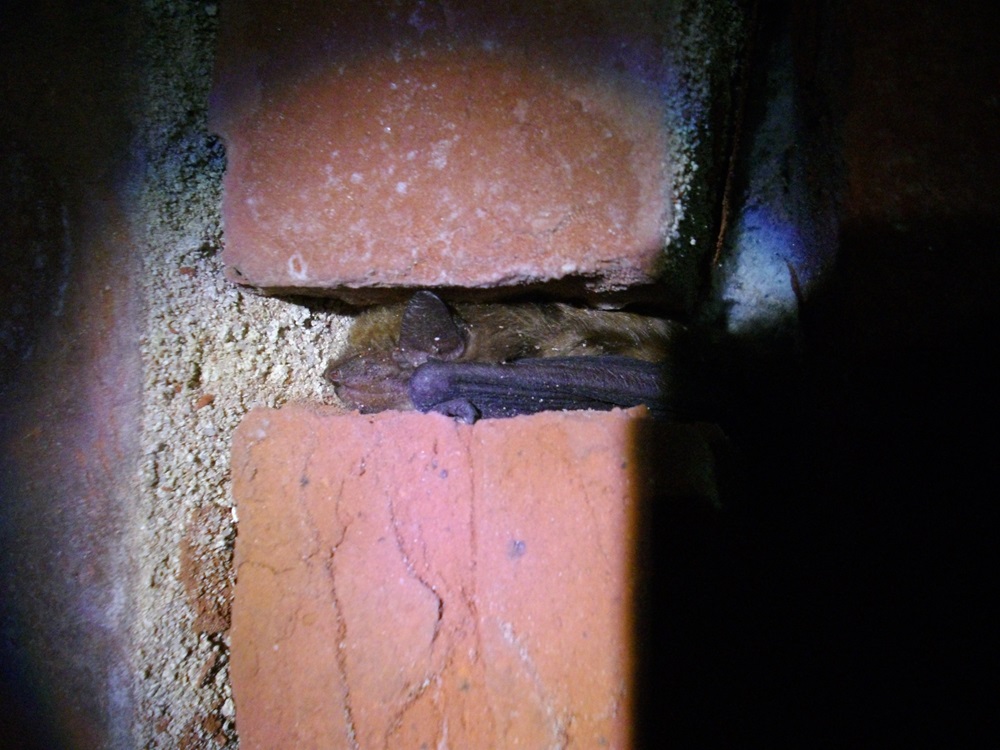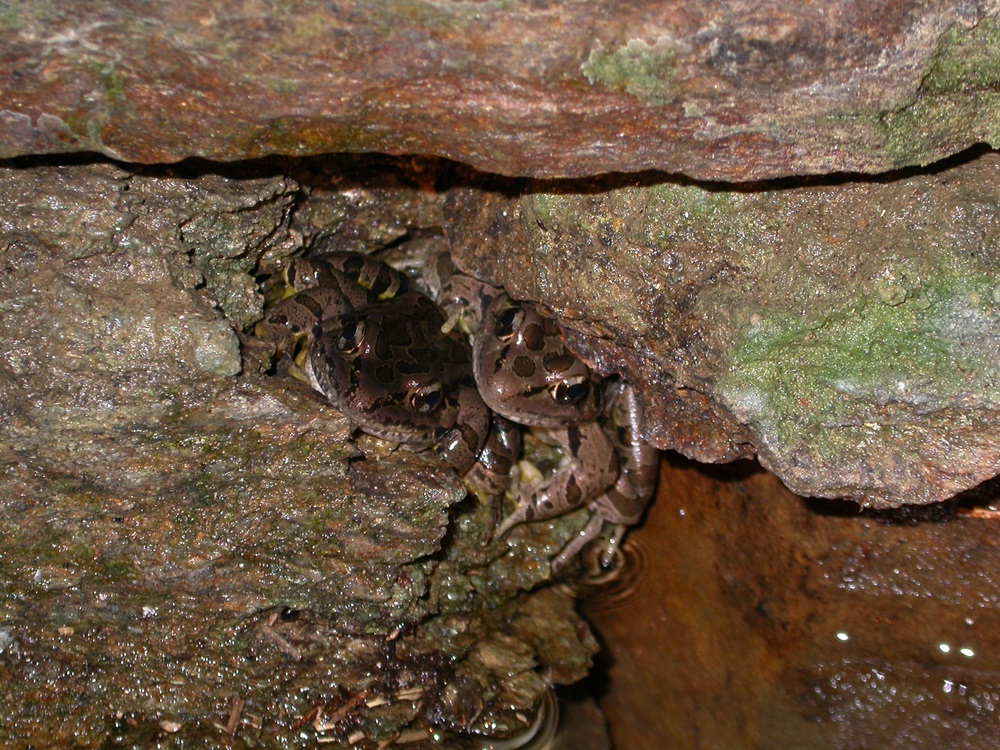It’s common knowledge that bears hibernate. Every winter, they fatten up and retreat to their dens where they snooze for several months, waiting out the cold weather.
But just how much do you know about hibernation itself? Can you name animals in Delaware that hibernate? Are you aware there’s a “lessened” form of hibernation that lasts up to a few weeks rather than several months?
Outdoor Delaware spoke to some of the experts at the Delaware Department of Natural Resources and Environmental Control to get the scoop on hibernation.

“In mammals, there’s hibernation and then there’s torpor,” said Hunter Slear, furbearer biologist within the DNREC Division of Fish and Wildlife. “Torpor is kind of like a semi form of hibernation. It’s not a true form of hibernation.”
Groundhogs are among the “true” hibernators in the First State, while animals that enter into torpor include chipmunks, raccoons, skunks, some songbirds and bats.
“Hibernation and torpor are both strategies to conserve energy and basically survive the winter,” Slear said. “Hibernation is a state where the animal’s body is not necessarily shutting down, but it is going into a full-on preservation mode. The animal’s body temperature drops and their heart rate and metabolism decreases.”
Both are about conserving energy during the winter months when the temperature drops and food is generally harder to come by, but hibernation is more “extreme.” It lasts longer and an animal takes longer to come out of hibernation than torpor, which is a form of short-term reduced energy.
“Let’s say it’s mid-February and we’re having temperatures in the teens for a few weeks. A raccoon will go find a den and decrease its metabolism for a short period of time to be able to endure that long period of both food availability shortage and the weather,” Slear said. “So, it’s kind of a short-term fix to get them through the winter.”
Exactly how long hibernation or torpor lasts varies depending on the species and the weather. Groundhogs, for instance, will enter their dens around December but can awaken from hibernation during January or February if the weather is warm enough.
Many species fatten themselves up in the fall in preparation for the colder months, which is “why you sometimes see animals double in size,” Slear said.
Some hibernating animals will wake up to go the bathroom within their burrow, while for many, their metabolism running at such a slow rate means they simply don’t produce much waste and thus can go weeks on end without needing to relieve themselves.
Bats are one of the main species in Delaware that go into torpor.

“Their heart rate, respiration rate and metabolism slow down, as does their immune system, making them vulnerable. They’re pretty much asleep for long periods of time in the winter, but they also wake up occasionally,” Holly Niederriter, wildlife biologist for the DNREC Division of Fish and Wildlife, said. “Some bats may wake up as often as every couple of weeks in Delaware.”
Scientists aren’t quite sure why bats wake up periodically, but it’s possibly to rehydrate.
Warmer winter weather will prompt many bat species to awaken temporarily, although doing so causes them to burn through their fat stores built up after stocking up on mosquitoes and other insects in the fall.
Bats will overwinter in different places depending on the species. Since Delaware has no caves, our cave bat species, like big brown bats, will often overwinter in homes, abandoned buildings and other structures with steady winter temperatures. Fort Delaware and Fort DuPont mimic caves, causing many bats to spend the winter there.
Tree bat species, such as red bats and silver-haired bats, do not hibernate in caves. They are migratory, but many in the region will overwinter in woodlands. Sometimes you can see red bats hanging from trees or silver-haired bats sleeping in wood piles.
“When hanging from a branch, they look remarkably like a dead leaf,” Niederriter said of red bats. “It’s easy to miss them and so much fun to spot it, so I recommend that people pay attention when they’re walking down the trail and if they do see something that looks like maybe it’s swinging or moving in an odd way, to go ahead and stop for a minute, take a closer look.”
Some bats overwinter in the leaf litter, so try not to stray from trails when hiking in the winter to avoid accidentally stepping on a snoozing critter.
As bats slowly wake up from torpor around March, they’ll take faster and faster breaths, increasing respiratory and heart rates to pump blood through their bodies. Exactly when they are fully awake again depends on the temperatures, with species slowly trickling back to their roosting colonies during spring.
Based on bat counts, DNREC knows “we get some coming in as early as March and early April, and the summer colonies build through April and by May most have returned and females set up their maternity sites,” Niederriter said.
Reptiles also enter into a shorter form of hibernation, known as brumation.
“In mammals, their metabolism slows as a physiological response that they do internally, whereas for herptiles their physiological responses are tied to temperature, so when the temperature decreases their nerves just don’t fire as quickly, essentially, so they become slow,” Nathan Nazdrowicz, state herpetologist with the DNREC Division of Fish and Wildlife, said.

As a result, reptiles will shelter in protected areas during the winter months to avoid freezing temperatures. Most aquatic turtles will brumate underwater, but mud turtles will ride the cold out on land. Snakes typically seek shelter underground below the frost line.
For reptiles, there’s generally a decline in activity around Halloween. That period of decreased activity lasts until about March, although as one might expect there is some variation from creature to creature. Species that overwinter deeper underground, for instance, take longer to awaken when the weather begins to perk up.
Amphibians like salamanders can be active year-round; in fact, tiger salamanders breed over the winter.
“We can get them crossing the road if it’s 32 degrees and raining,” Nazdrowicz said.
Many frogs enter into brumation in the soil or leaf litter, while some do so in ponds or streams, hiding among leaves and mud to keep warm.
Some species, like the wood frog, exhibit freeze tolerance. Cryoprotectants in the tissue fluids prevent ice crystals from bursting cells as the frog freezes, an adaptation that allows the frog’s whole body to freeze solid and survive the winter.
Hibernation, brumation, torpor — they’re all survival mechanisms developed to help animals ride out hostile climates. Imagine if humans could slow their bodies down and take looooong naps — society would certainly look different if we shut down for prolonged periods of time during the winter months. But that’s a thought experiment for another day.
Related Topics: animals, biologists, biology, brumation, conservation, fish and wildlife, hibernation, nature, outdoor delaware, science